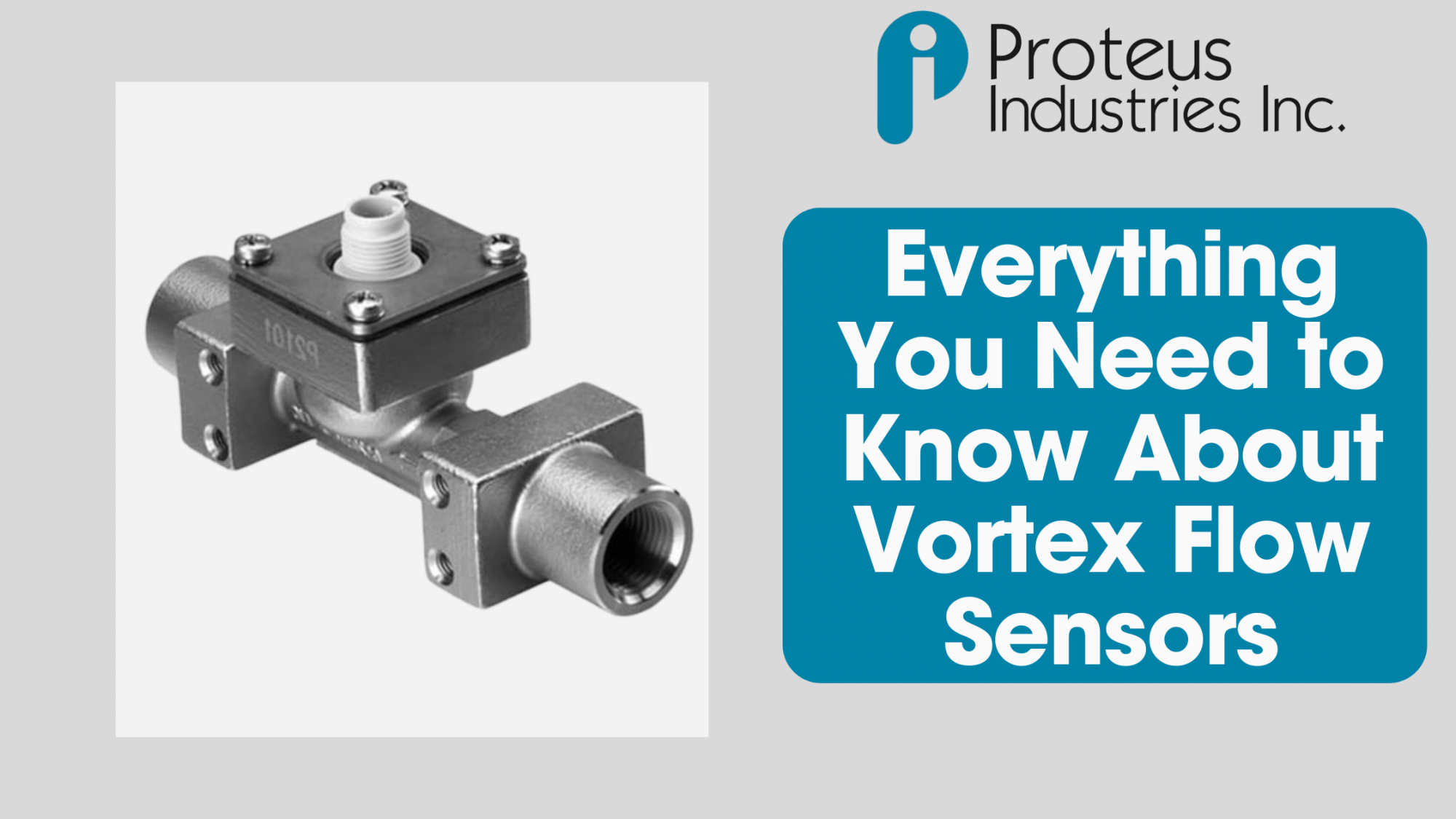Have you ever wondered how industries accurately measure the flow of liquids and gases? The answer often lies in the sophisticated technology of the Vortex Flow Sensor. These sensors are indispensable in various applications, providing precision and reliability where needed. This article will explore vortex flow sensors, their workings, applications, advantages, and more. By the end, you’ll understand why vortex flow sensors, like those from Proteus Industries Inc., are essential tools in modern fluid measurement.
How Vortex Flow Sensors Work
We need to dive into some fascinating physics to understand vortex flow sensors. These sensors operate based on the vortex shedding principle, which involves forming vortices when a fluid flows past an obstruction.
1. Vortex Shedding: A Scientific Overview
When a fluid, whether liquid or gas, encounters an obstacle in its path (referred to as a bluff body), it creates areas of alternating low pressure downstream of the obstruction. These low-pressure zones result in the formation of vortices, which are essentially swirling eddies. The frequency at which these vortices are shed from the bluff body is directly proportional to the fluid’s flow velocity. Vortex flow sensor can determine the flow rate by measuring the frequency of these vortices.
2. Critical Components of Vortex Flow Sensors
- Bluff Body: The obstruction placed in the fluid path that generates the vortices.
- Sensor: Detects the presence and frequency of the vortices.
- Signal Processor: Converts the frequency data into a readable flow rate.
These components work together seamlessly to provide accurate and reliable flow measurements.
Advantages of Using Vortex Flow Sensors
Vortex flow sensors offer several benefits, making them a preferred choice for many applications.
1. Accuracy and Reliability
One of the most significant advantages is their high accuracy. Vortex flow sensors provide precise measurements, which are essential in applications where even slight deviations can lead to substantial issues. Their reliability ensures consistent performance over time, making them dependable for critical operations.
2. Durability and Longevity
These sensors are designed to resist harsh conditions, including extreme temperatures, pressures, and corrosive environments. Their robust construction ensures a long operational life with minimal maintenance, reducing downtime and operational costs.
3. Cost-Effectiveness
Despite their advanced technology, vortex flow sensor are relatively cost-effective. They offer a balance of high performance and reasonable cost, providing an excellent return on investment for businesses looking to optimize their flow measurement processes.
Installation and Maintenance
Proper installation and regular supervision are vital to providing the optimal performance of vortex flow sensors.
1. Proper Installation Techniques
- Positioning: Ensure the sensor is installed in a straight pipe run with no obstructions upstream or downstream. The length of the straight run required varies by sensor design, but typically, it should be at least ten pipe diameters upstream and five pipe diameters downstream.
- Orientation: Install the sensor according to the manufacturer’s specifications regarding orientation to the flow direction and pipe position (horizontal or vertical).
2. Routine Maintenance Tips
- Inspection: Regularly inspect the sensor and the bluff body for any signs of wear, corrosion, or buildup that could affect performance.
- Cleaning: Periodically clean the sensor to remove any deposits that may accumulate over time, ensuring the bluff body and sensor elements are free of obstructions.
- Calibration: To maintain accuracy, periodically verify the sensor’s calibration. This involves comparing the sensor readings to a known standard and adjusting as necessary.
Selecting the Right Vortex Flow Sensor
Choosing the appropriate vortex flow sensor for your application involves several considerations.
1. Factors to Consider
- Fluid Type: Understand the properties of the fluid you are measuring, including its viscosity, temperature, and pressure.
- Flow Rate Range: Ensure the sensor can handle your application’s expected flow rates.
- Installation Environment: Consider the pipe size, available space for installation, and environmental conditions like temperature and pressure.
2. Customizing for Specific Needs
Many manufacturers, including Proteus Industries Inc., offer customization options. This allows you to tailor the sensor to your specific application needs, whether it’s a unique pipe size, fluid property, or installation constraint.
Innovations in Vortex Flow Sensor Technology
As with all technology, vortex flow sensors continue to evolve. Recent advancements and future trends promise to enhance their performance and expand their applications.
1. Recent Advancements
- Enhanced Signal Processing: Improved electronics have improved accuracy and reliability, with advanced signal processing algorithms minimizing the impact of noise and other interferences.
- Wireless Connectivity: Modern vortex flow sensors now offer wireless data transmission capabilities, making it easier to integrate them into Internet of Things (IoT) systems and enabling remote monitoring and control.
2. Future Trends
The future of vortex flow sensors looks promising, with several exciting trends on the horizon:
- Smart Sensors: Integration with artificial intelligence (AI) and machine learning (ML) to provide predictive maintenance and advanced diagnostics.
- Material Advancements: The development of new materials that enhance durability and resistance to extreme conditions.
- Miniaturization: Smaller, more compact sensors can be used in a broader range of applications, including those with limited space.
Case Study: Proteus Industries Inc. Vortex Flow Sensors
Proteus Industries Inc. is a leading provider of advanced flow measurement solutions, and their vortex flow sensors are a testament to their innovation and quality.
1. Product Spotlight: V7000 Series Vortex Flow Meters
The V7000 Series from Proteus Industries Inc. is designed for accuracy and durability. These meters suit various applications, from industrial process control to commercial HVAC systems. Key features include:
- High Accuracy: Provides precise flow measurements with minimal error.
- Robust Construction: Made from durable materials to withstand harsh environments.
- Easy Integration: Compatible with various data acquisition systems, including wireless options for remote monitoring.
Read More: What Are the Advantages of Using a Compact Flow Meter?
Conclusion
Vortex Flow Sensor are vital tools in modern fluid measurement, from fundamental principles to cutting-edge applications. They offer a blend of accuracy, reliability, and versatility, making them suitable for various industries. These sensors will evolve as technology advances, offering even more precise and efficient solutions. Vortex flow sensors from companies Proteus Industries Inc. provide essential benefits that drive efficiency, accuracy, and cost savings in fluid measurement. Businesses can optimize their processes and achieve superior results by remaining informed about the latest advances and best practices in using these sensors. So, to upgrade your fluid measurement systems, consider the robust and reliable vortex flow sensors as your go-to solution.

